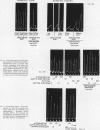Abstract
Aqueous extracts prepared from dust collected in the card-rooms of several cotton mills have been prepared and found to contain activity which contracts the smooth muscle of guinea-pig ileum, guinea-pig trachea, rat stomach strip, and rat duodenum. The extracts contained an unknown contractor substance which was dialysable, resistant to boiling for one hour, and not destroyed by the action of proteolytic enzymes. They also contained a small amount of 5-hydroxytryptamine. One of the dust samples also contained histamine, but it could not be detected in the other samples, one of which was known to possess bronchoconstrictor properties in man. The particulate material, even after repeated washing, was found to have some stimulant action on guinea-pig ileum.
There was no evidence for the release of histamine by the extracts in either cats or guinea-pigs, although a very small amount was released in rats. Jute dust is much less active than cotton dust, and the activity differs qualitatively. Cotton dust extracts were found to have pyrogenic activity but it is unlikely that pyrogens were responsible for the smooth-muscle contractor properties. Experiments with whole animals suggest that although smooth-muscle contracting substances were present in the extracts, it is possible that the symptoms of byssinosis are caused by the release of some other active bronchoconstrictor substance in the tissues. The mechanism of the release is not known; it may be caused by a soluble principle in the extract or due to the presence of particulate matter in the dust.
Full text
PDF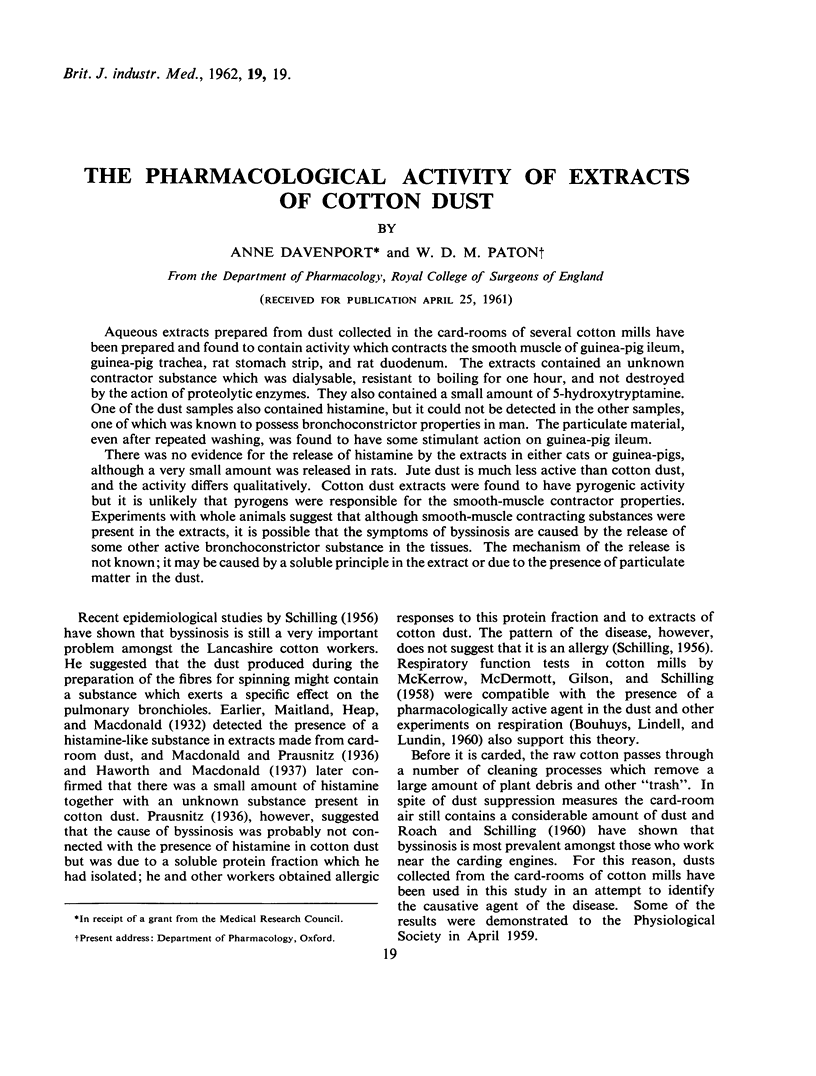
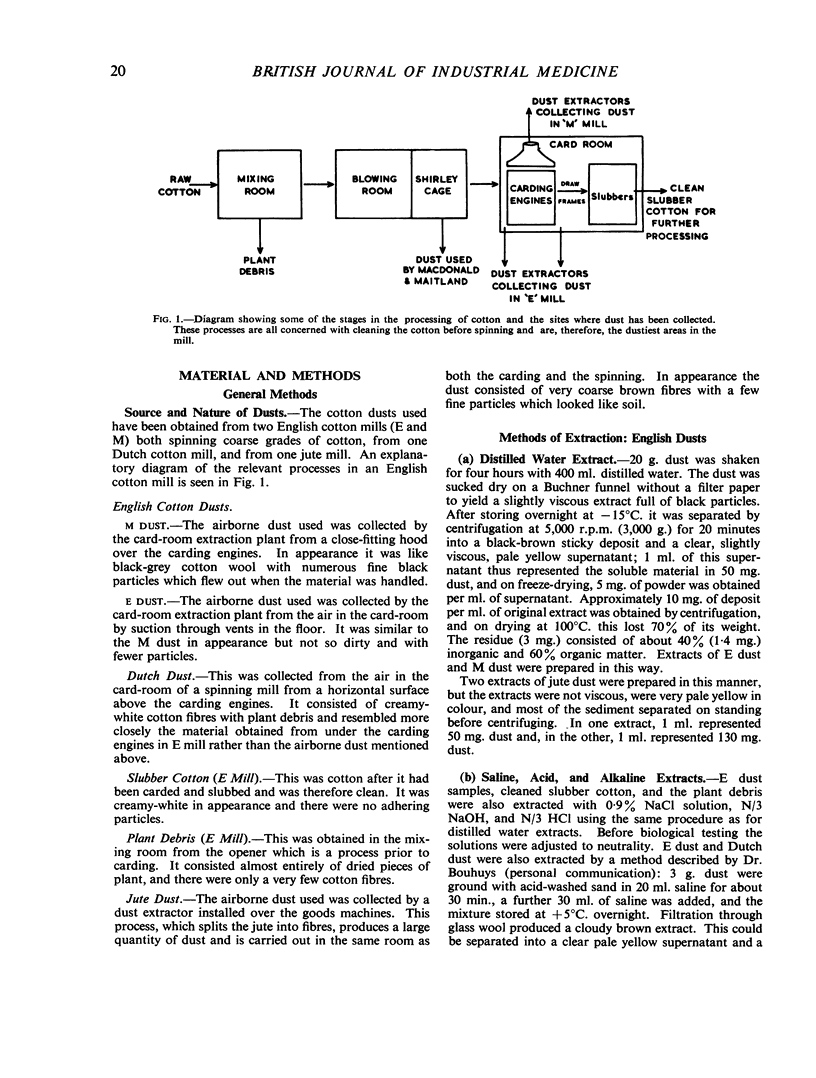
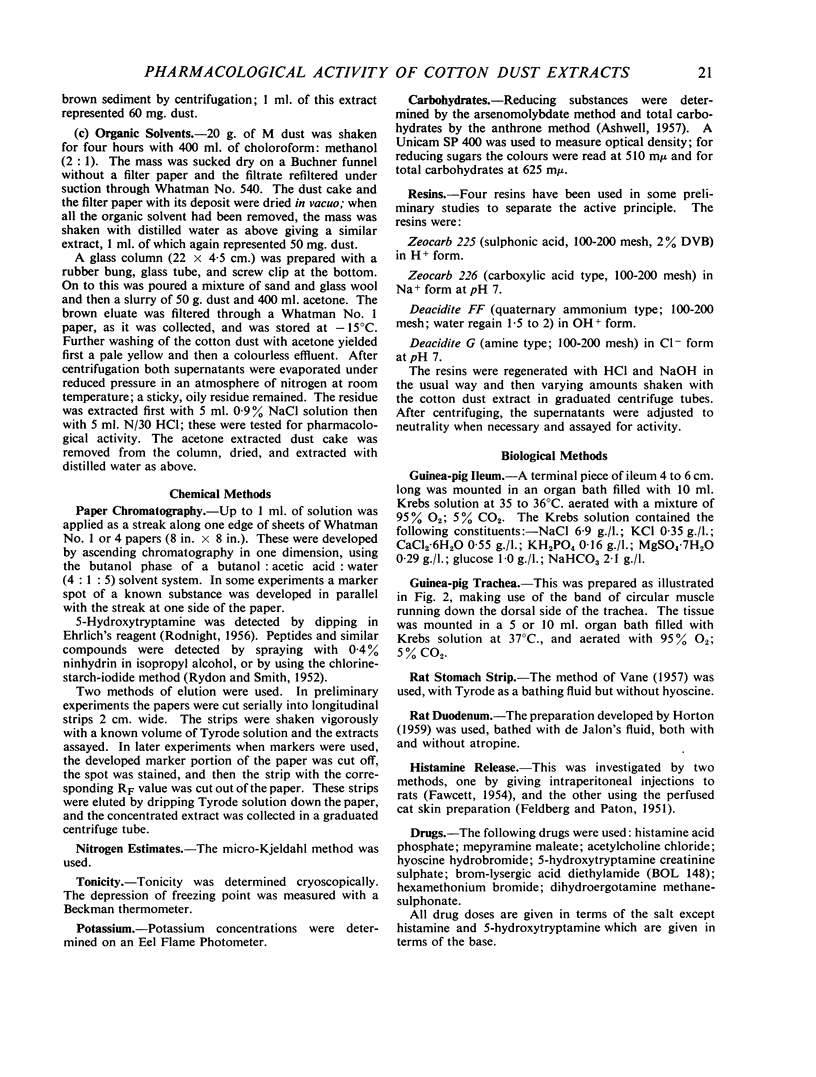
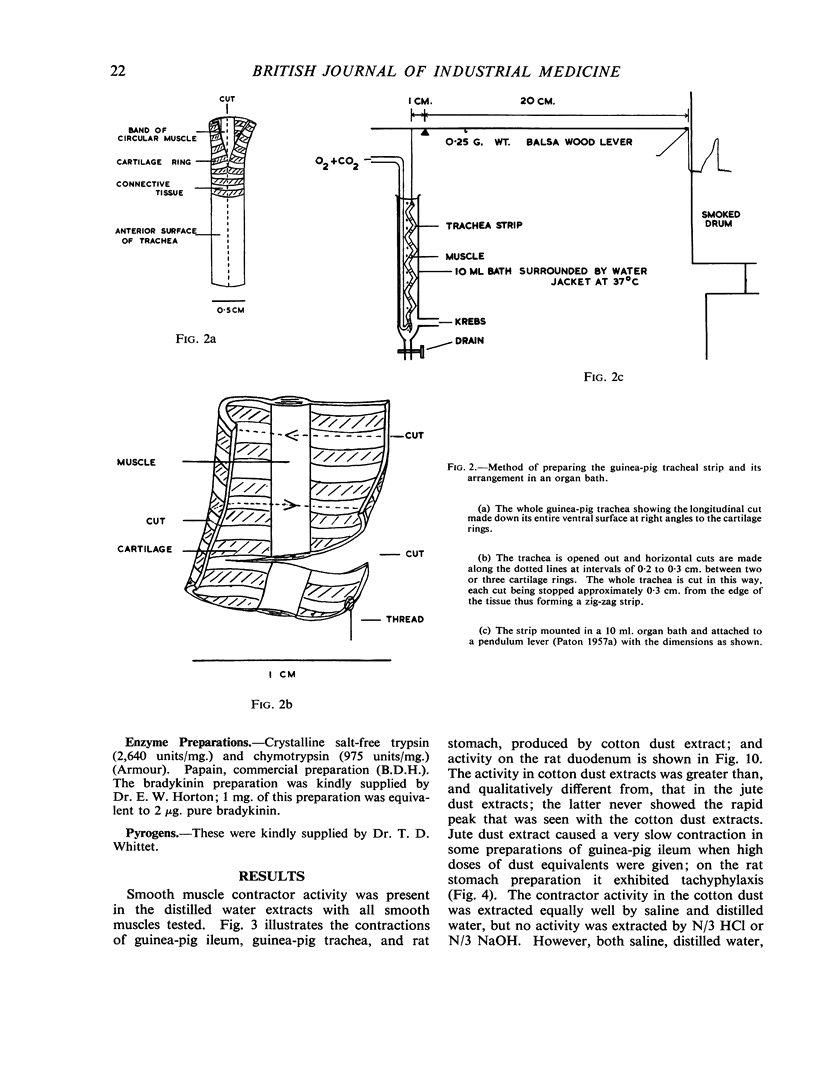
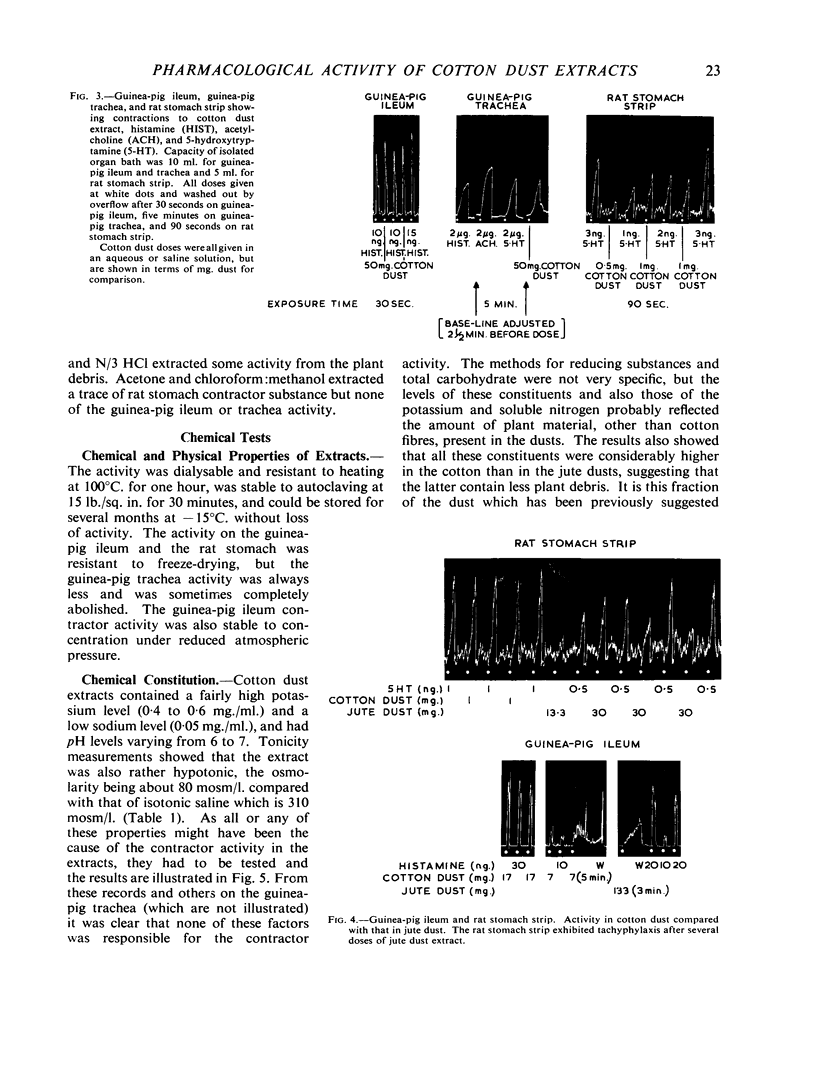


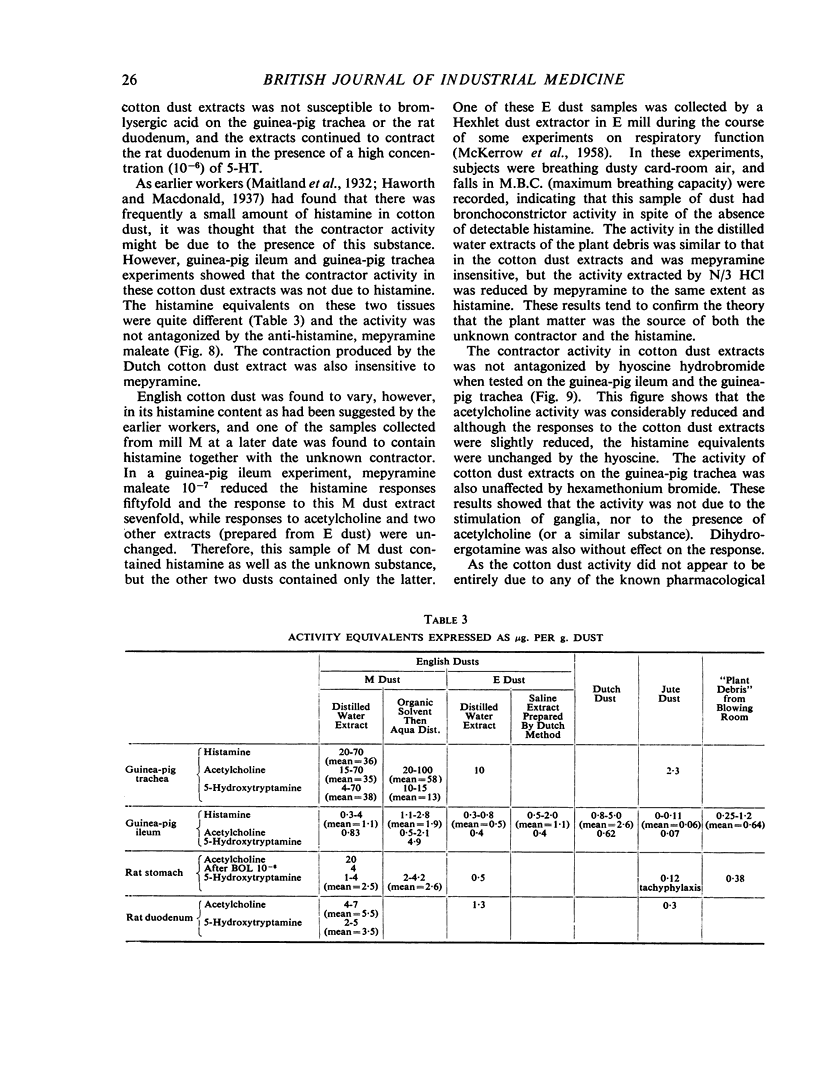
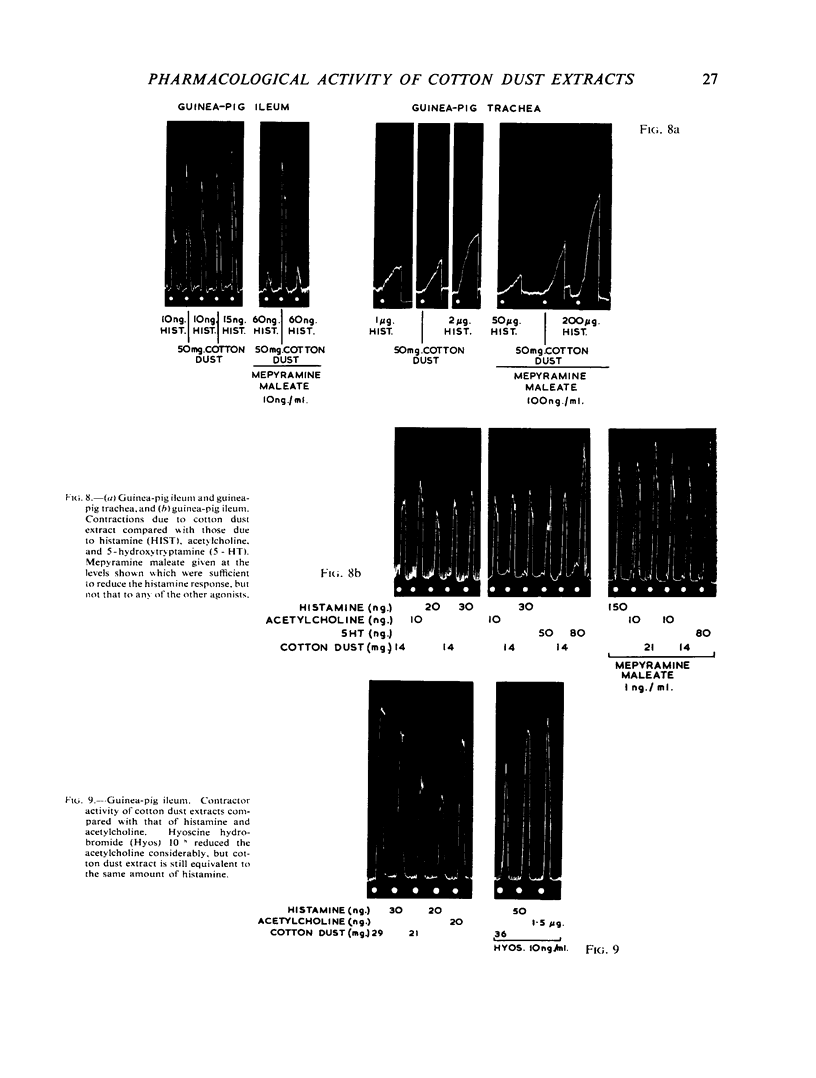
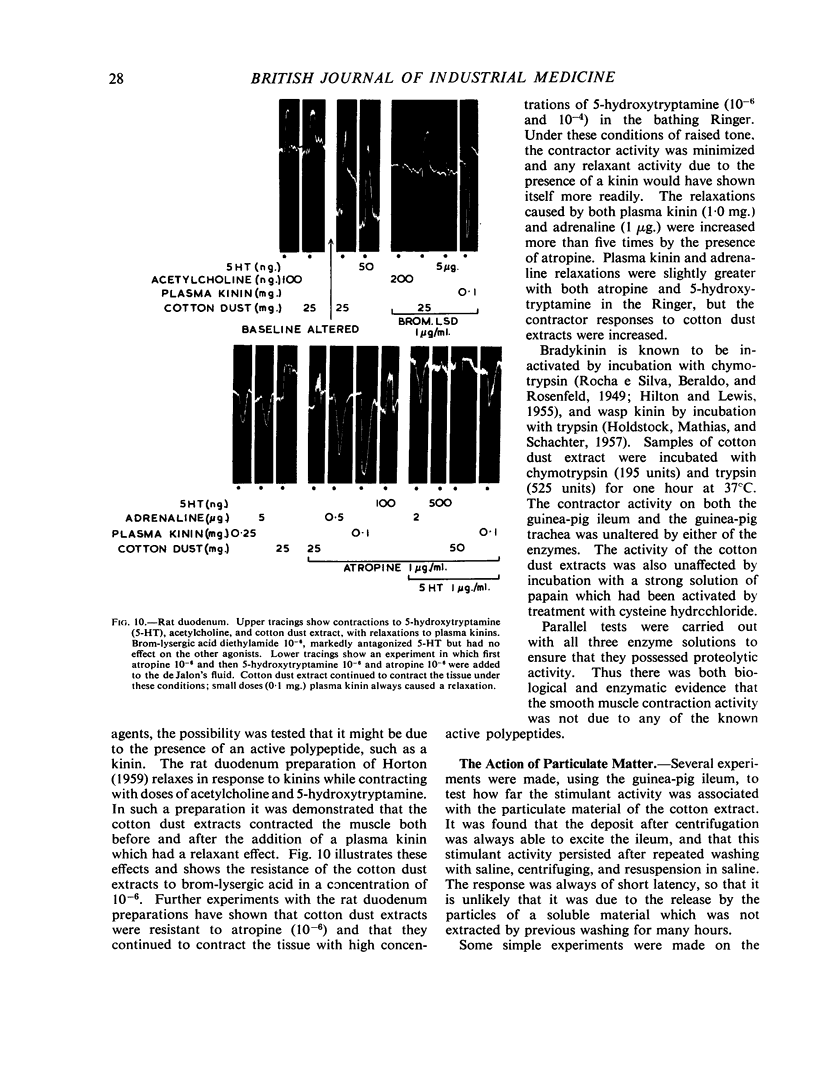
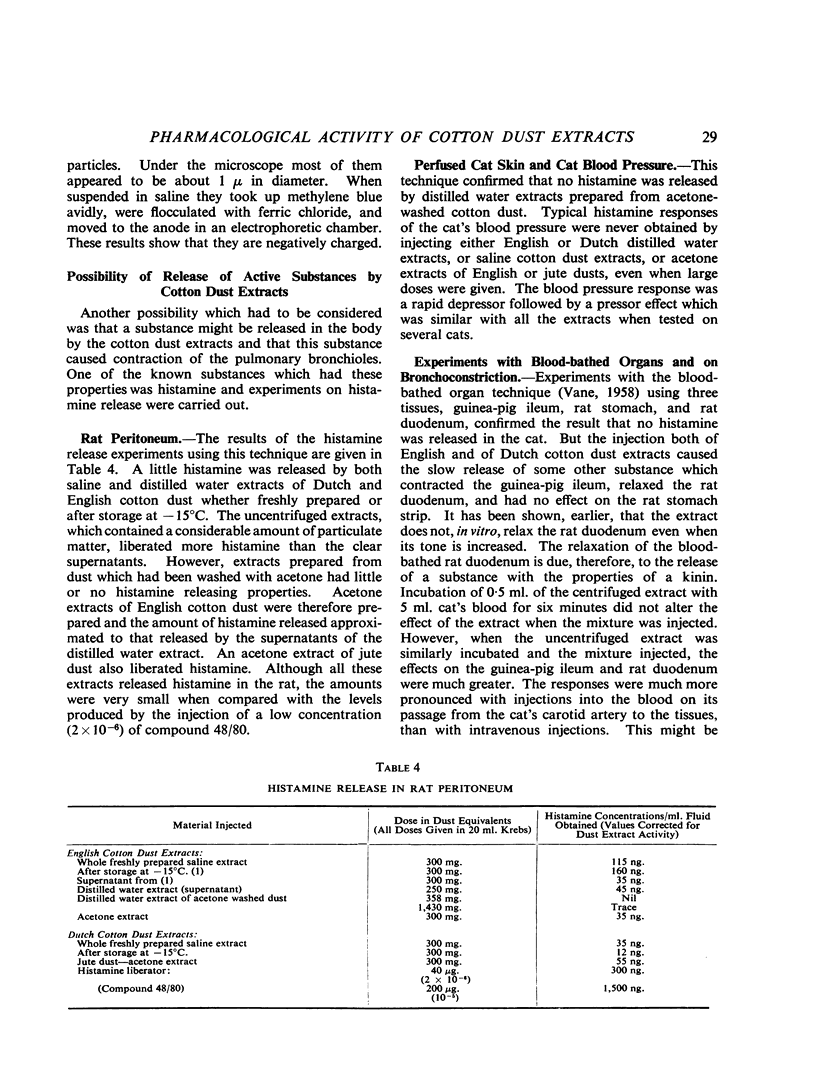
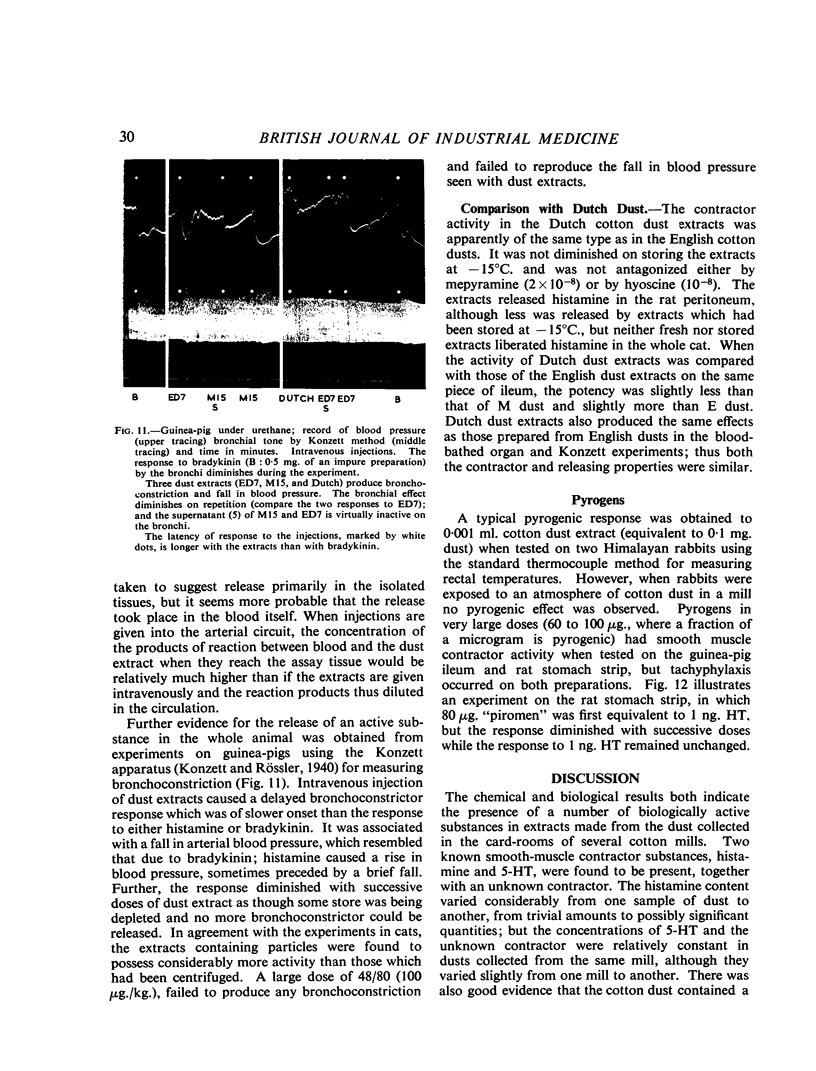
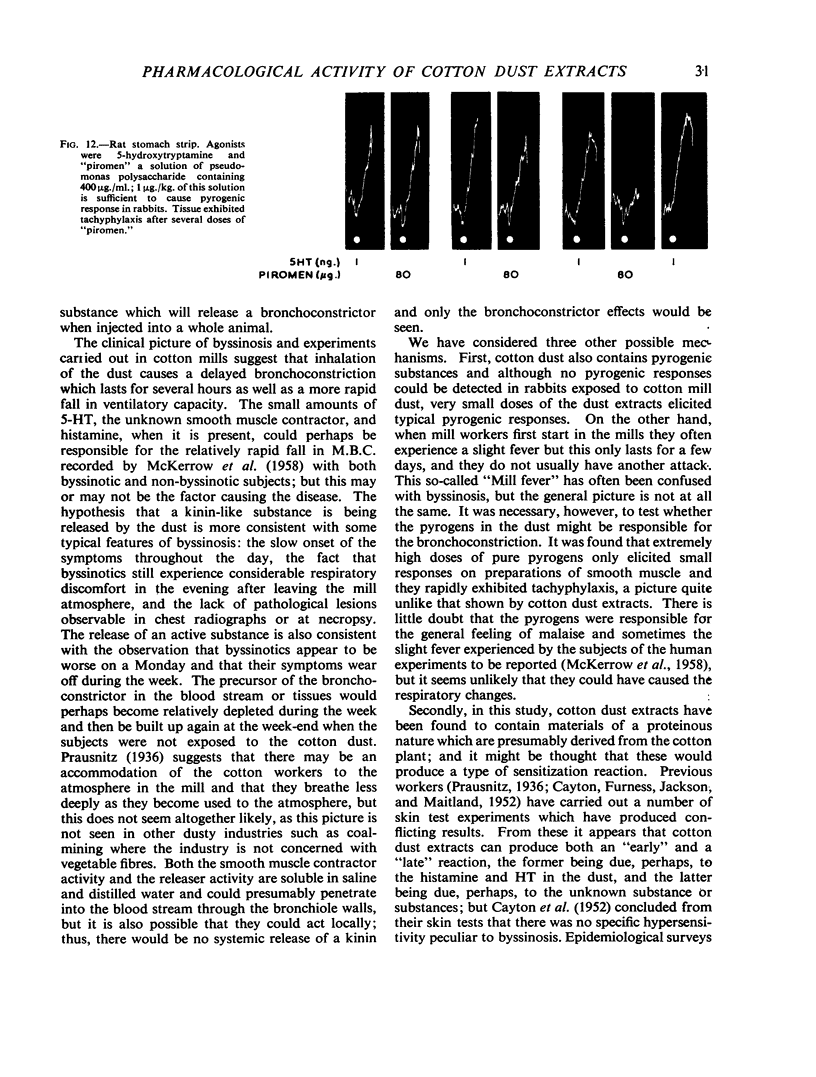
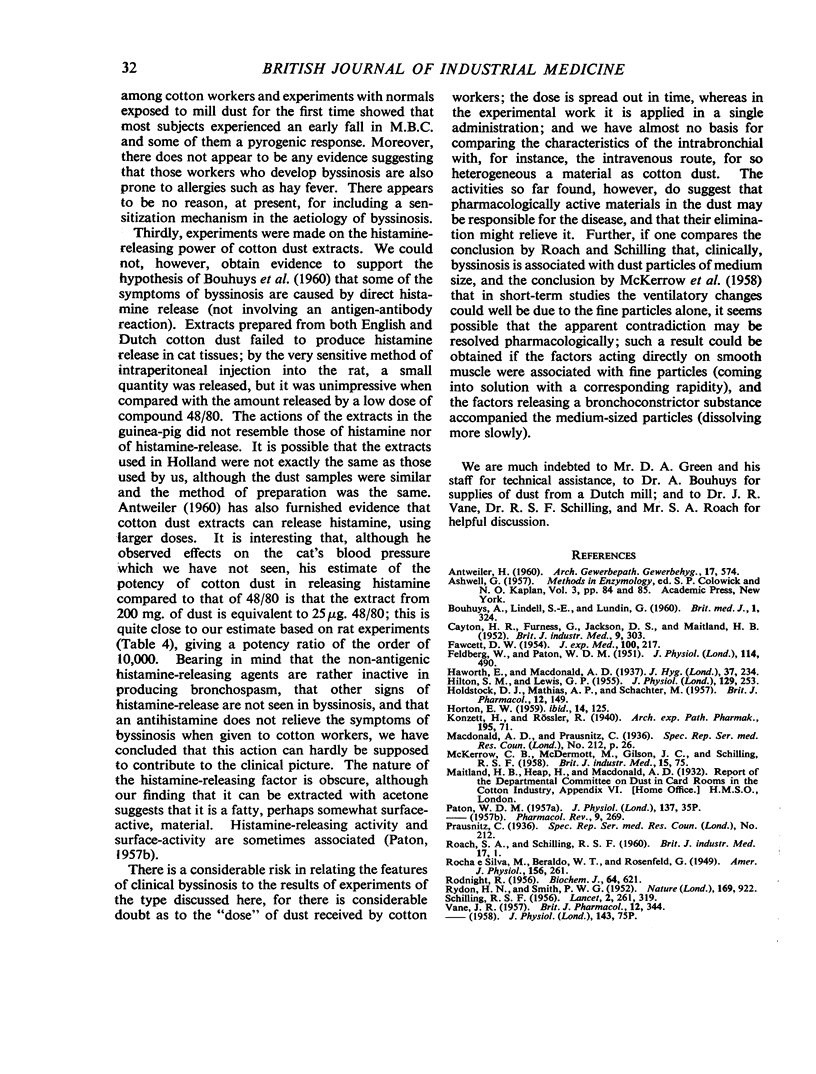
Images in this article
Selected References
These references are in PubMed. This may not be the complete list of references from this article.
- ANTWEILER H. [Experimental animal studies on the pathogenesis of byssinosis]. Arch Gewerbepathol Gewerbehyg. 1960;17:574–588. [PubMed] [Google Scholar]
- BOUHUYS A., LINDELL S. E., LUNDIN G. Experimental studies on byssinosis. Br Med J. 1960 Jan 30;1(5169):324–326. doi: 10.1136/bmj.1.5169.324. [DOI] [PMC free article] [PubMed] [Google Scholar]
- BREITENBACH J. W., DERKOSCH J., WESSELY F. Energetics of peptide formation. Nature. 1952 May 31;169(4309):922–922. doi: 10.1038/169922a0. [DOI] [PubMed] [Google Scholar]
- CAYTON H. R., FURNESS G., JACKSON D. S., MAITLAND H. B. Studies on cotton dust in relation to byssinosis. III. Comparison of cotton dust and house dust by chemical and skin tests. Br J Ind Med. 1952 Oct;9(4):303–308. doi: 10.1136/oem.9.4.303. [DOI] [PMC free article] [PubMed] [Google Scholar]
- FAWCETT D. W. Cytological and pharmacological observations on the release of histamine by mast cells. J Exp Med. 1954 Aug 1;100(2):217–224. doi: 10.1084/jem.100.2.217. [DOI] [PMC free article] [PubMed] [Google Scholar]
- FELDBERG W., PATON W. D. M. Release of histamine from skin and muscle in the cat by opium alkaloids and other histamine liberators. J Physiol. 1951 Aug;114(4):490–509. doi: 10.1113/jphysiol.1951.sp004639. [DOI] [PMC free article] [PubMed] [Google Scholar]
- HILTON S. M., LEWIS G. P. The mechanism of the functional hyperaemia in the submandibular salivary gland. J Physiol. 1955 Aug 29;129(2):253–271. doi: 10.1113/jphysiol.1955.sp005351. [DOI] [PMC free article] [PubMed] [Google Scholar]
- HOLDSTOCK D. J., MATHIAS A. P., SCHACHTER M. A comparative study of kinin, kallidin, and bradykinin. Br J Pharmacol Chemother. 1957 Jun;12(2):149–158. doi: 10.1111/j.1476-5381.1957.tb00113.x. [DOI] [PMC free article] [PubMed] [Google Scholar]
- PATON W. D. A pendulum auxotonic lever. J Physiol. 1957 Jul 11;137(2):35P–356. [PubMed] [Google Scholar]
- RODNIGHT R. Separation and characterization of urinary indoles resembling 5-hydroxytryptamine and tryptamine. Biochem J. 1956 Dec;64(4):621–626. doi: 10.1042/bj0640621. [DOI] [PMC free article] [PubMed] [Google Scholar]








